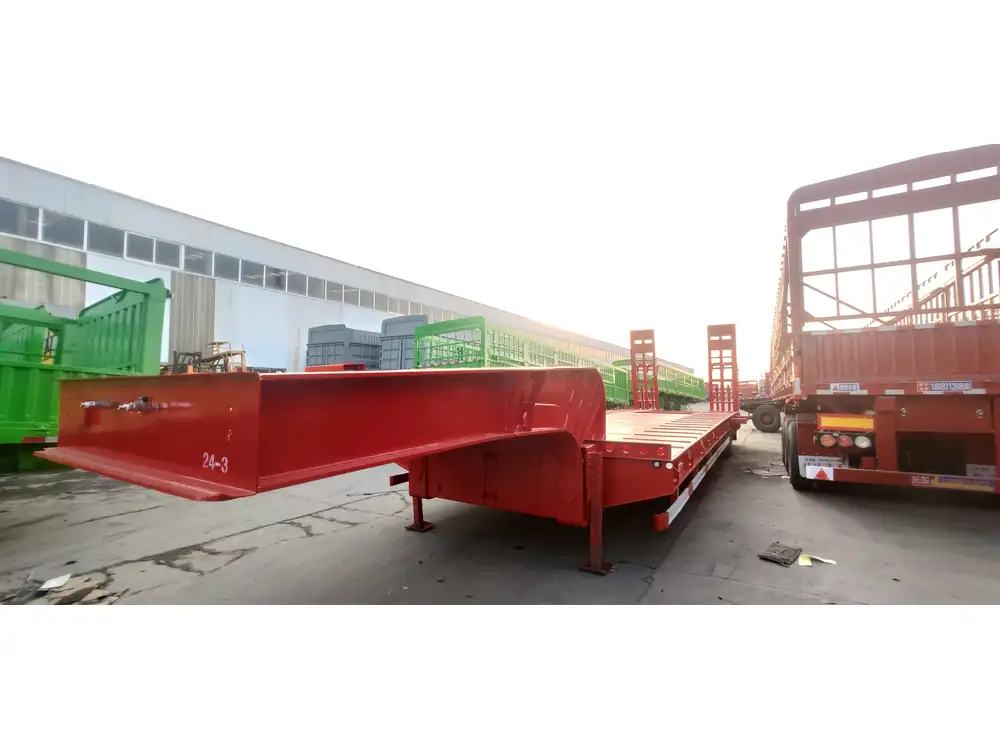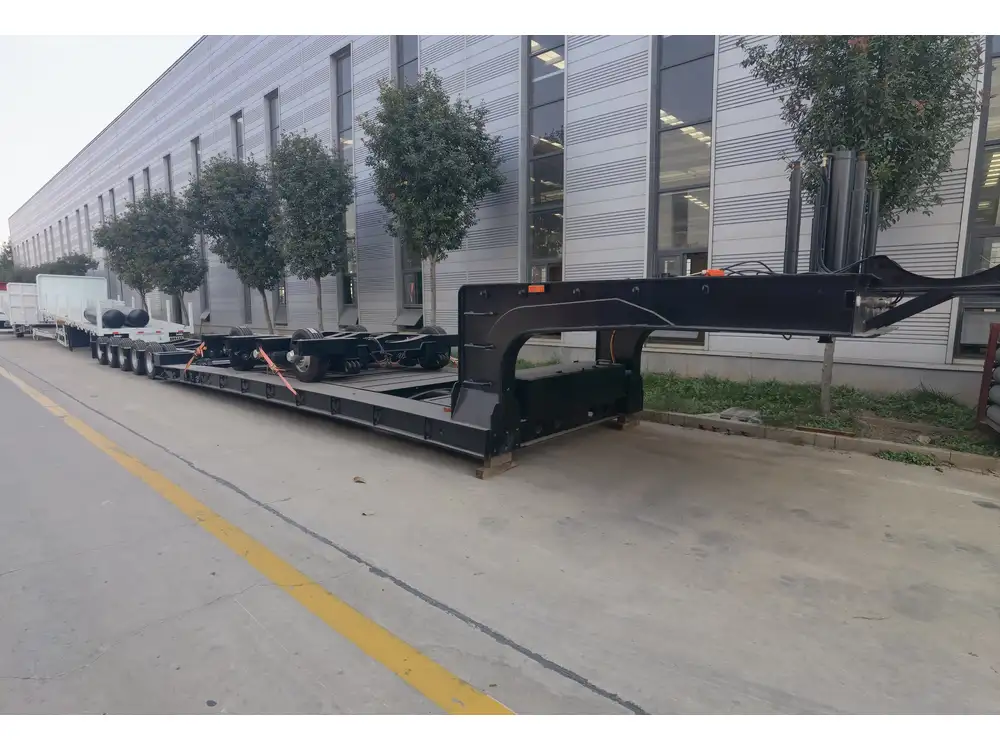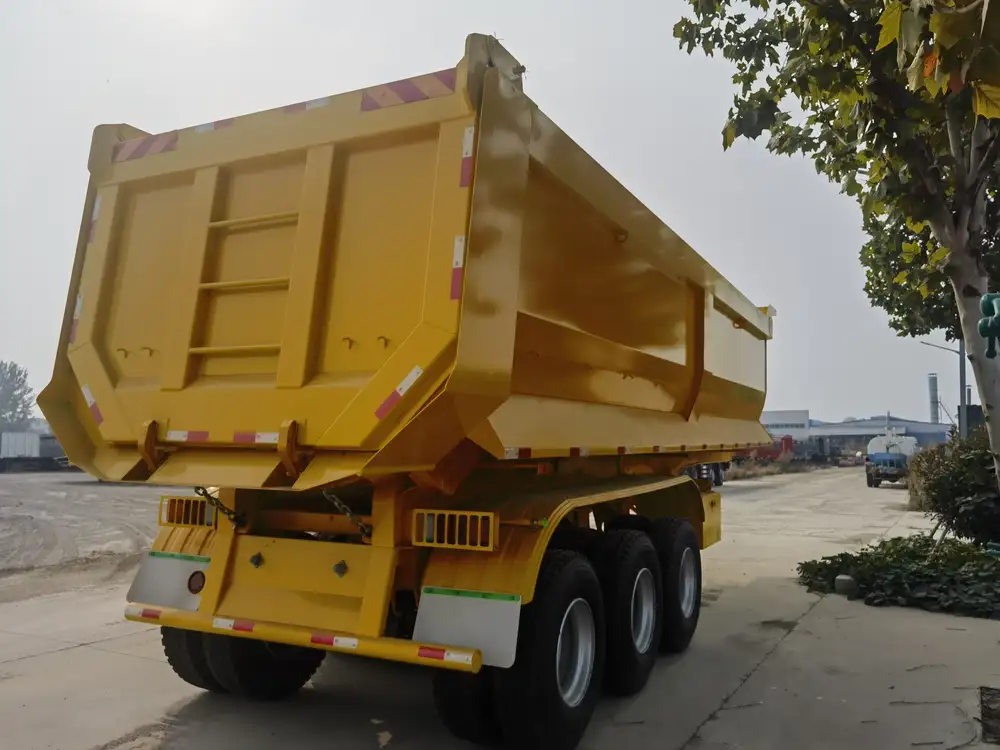The configuration of the axles on semi-trailers is a subject of considerable interest among logistics professionals, truck drivers, and manufacturers alike. A common query that arises in discussions surrounding trailer design is: “Why are semi-trailer axles so far back?” The placement of axles plays a critical role in several operational aspects, including weight distribution, stability, maneuverability, and regulatory compliance. This article delves deeply into the rationale behind the rearward position of semi-trailer axles, while also addressing related technical details that can impact performance and safety.
1. The Mechanics of Weight Distribution
One of the primary reasons semi-trailer axles are situated towards the rear is effective weight distribution. Understanding how weight is managed in a hauling scenario is crucial.
1.1 Impact on Load Stability
The axle placement considerably affects handling characteristics. Trailers with axles positioned farther back tend to:
Enhance Stability: By shifting the load center of gravity toward the rear, the vehicle gains improved stability. This reduces the risk of jackknifing, especially during sharp turns.
Increase Load Capacity: With rear-mounted axles, there’s more effective distribution of weight over the trailer frame. This can lead to a higher permissible load without compromising structural integrity.
| Axle Position | Stability Level | Load Capacity |
|---|---|---|
| Forward | Lower | Lower |
| Rearward | Higher | Higher |

1.2 Legal Compliance and Weight Regulation
Federal and state regulations regarding axle weights necessitate that semi-trailer axles are placed for optimal weight distribution.
- Bridge Formula Compliance: The placement helps meet legal requirements under the Bridge Formula, which determines maximum load capacities based on axle configuration and spacing.
1.3 Trailer Type Considerations
Different types of trailers have specific axle placements based on their dedicated function:
- Reefer Trailers: Often have more rearward axles to balance the weight of refrigeration units at the front.
- Flatbed Trailers: Typically use a mixed axle configuration to accommodate varied cargo types and sizes.
2. Maneuverability and Turning Radius
The semi-trailer’s turning characteristics change dramatically based on axle position.

2.1 Improved Maneuverability
Positioning the axles farther back allows for:
Tighter Turns: A rear axle can help in achieving a smaller turning radius, making it easier for drivers to navigate through tight urban environments or loading docks.
Decreased Scrubbing: The reduction in tire scrubbing is significant because with the proper positioning, friction is minimized during sharp turns, prolonging tire lifespan.
2.2 Considerations for Urban Driving
In urban settings where sharp turns and quick maneuvers are necessary, having the axles located toward the back allows for better handling without sacrificing load security.
3. Suspension Systems and Ride Quality
The choice of suspension plays a significant role in the performance of trailers.

3.1 Enhanced Ride Quality
The correlation between axle placement and suspension technology can’t be overstated.
Air Ride Suspensions: These systems, often used in trailer configurations with rear axles, provide better shock absorption and ride comfort, leading to improved cargo protection.
Leaf Spring Suspensions: Generally employed in trailers with various axle placements, a rearward configuration can improve axle load sharing, thus providing greater stability under load.
| Suspension Type | Axle Placement | Advantages |
|---|---|---|
| Air Ride | Rearward | Better shock absorption, comfort |
| Leaf Spring | Forward/Rearward | Robustness, adaptability |
4. Summary of Performance Benefits
To sum up the advantages associated with having semi-trailer axles positioned toward the rear:
- Improved Weight Distribution: Better stability and load capacity compliance with regulations.
- Enhanced Maneuverability: Ability to navigate tight spaces efficiently.
- Increased Ride Quality: Better protection for cargo due to advanced suspension systems.
When considering trailer design, it becomes clear that the positioning of axles influences not only the vehicle’s operational aspects but also its safety, regulatory adherence, and efficiency.
5. Common Questions and Misconceptions

5.1 Why Don’t All Trailers Have Rear Axles?
It’s a misconception that all trailers benefit from having rear axles. Different applications and designs cater to varying demands:
- Heavy Equipment Haulers: These may require front-axle positioning for balance and weight distribution.
- Specialized Trailers: Such as lowboys, designed for specific loads or regulations.
5.2 Do Rear Axles Mean Less Wear on Tires?
While rear axles help in reducing scrubbing during turns, tire wear ultimately depends on multiple factors:
- Loading Conditions: Uneven weight distribution can lead to excessive wear.
- Driving Habits: Aggressive steering can affect tire longevity, even with optimal axle positioning.
6. Exploring Technological Innovations in Axle Design
The design and placement of semi-trailer axles are evolving with advancements in technology. New materials, electronic monitoring systems, and improved engineering methodologies enhance performance.

6.1 The Role of Smart Technology
Innovations like smart suspension systems offer real-time data on load distribution and axle performance, thus allowing for immediate adjustments and enhancing overall safety.
6.2 Future Trends
As regulations evolve and the demand for environmentally friendly logistics increases, further innovations in axle design will likely focus on:
- Lightweight Materials: To facilitate better fuel efficiency.
- Modular Axle Systems: Allowing for the adjustment of axle configurations based on specific transport needs.
Conclusion
Understanding why semi-trailer axles are positioned far back is crucial for logistics professionals, manufacturers, and drivers aiming to optimize their operations. Through strategic axle placement, significant advantages in weight distribution, stability, maneuverability, and ride quality can be achieved. By recognizing the critical role these functional design elements play, stakeholders can make informed decisions that enhance performance, ensure compliance, and improve overall transport safety and efficiency.
Through continuous exploration of technological advancements and a clear understanding of trailer dynamics, we can enhance our knowledge and application of these essential components in the transportation industry. The ongoing evolution in axle design will significantly influence the future of logistics, making it an exciting field to observe and engage with.



